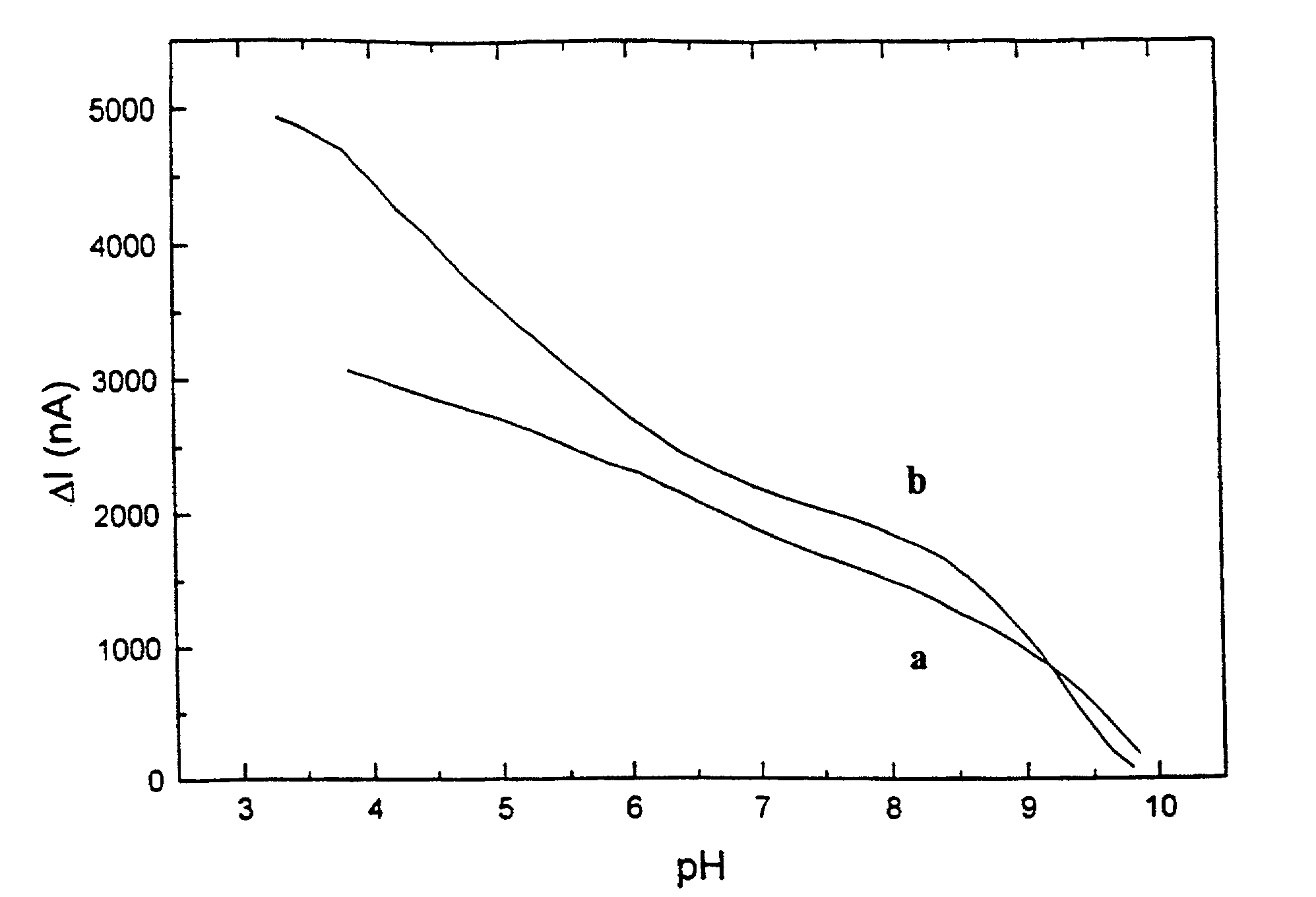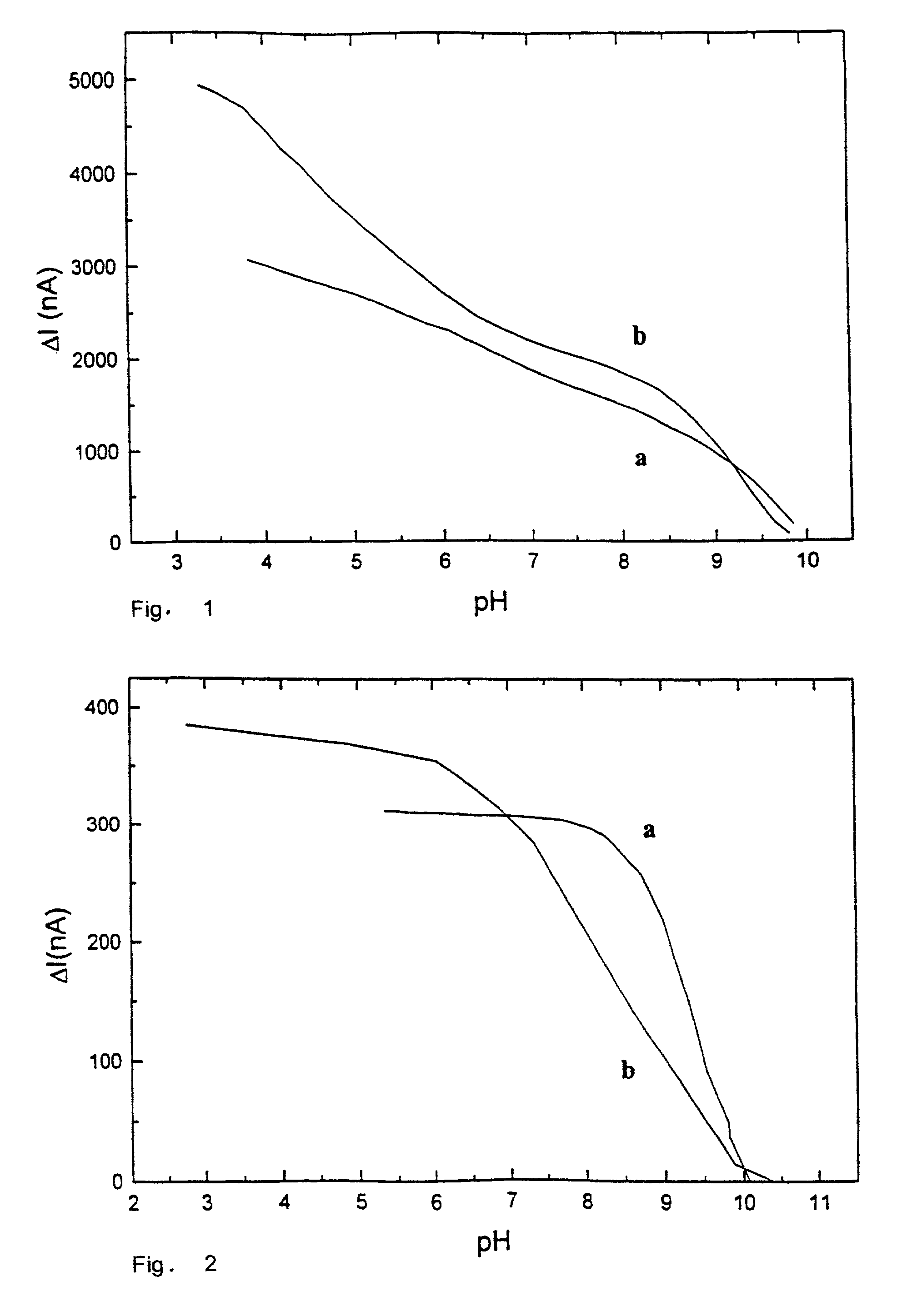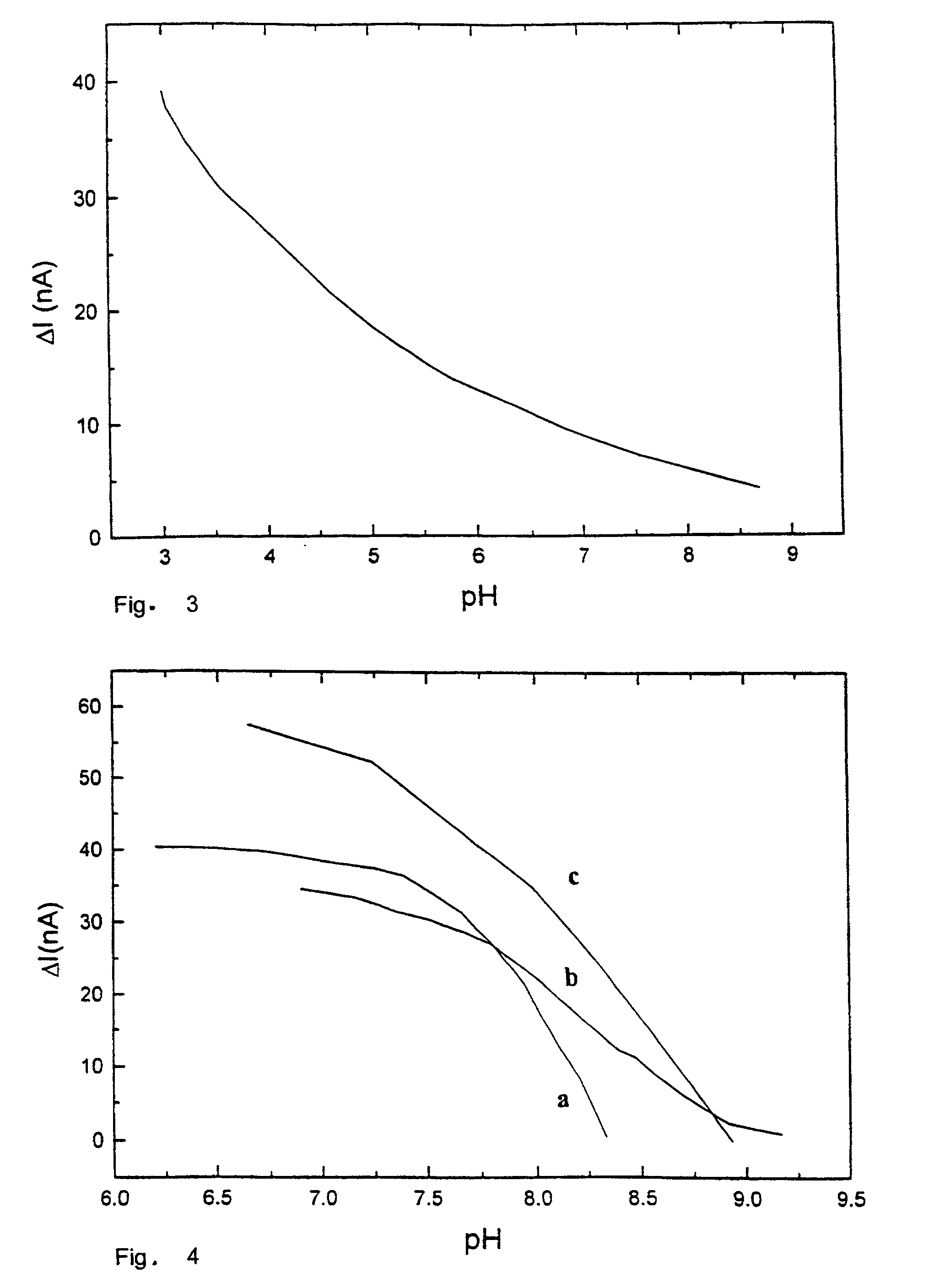pH-sensitive amperometric biosensor
a biosensor and amperometric technology, applied in the field of electrochemical analysis, can solve the problems of low sensitivity, logarithmic response and low sensitivity, and limit inherent in amperometric biosensors, and achieve the effect of accurate detection of a wide range of analytes
- Summary
- Abstract
- Description
- Claims
- Application Information
AI Technical Summary
Benefits of technology
Problems solved by technology
Method used
Image
Examples
example 1
Current Change Variation with pH in the Presence of Dissolved Hematein by Using a Platinum Electrode
[0100]Hematein (Fluka, Cat. No. 51230) is dissolved in 0.05 M phosphate buffer containing 0.1 M sodium chloride. The working platinum electrode and the SCE reference electrode are immersed in the solution and the current is measured by an Amel 559 amperometric detector (Amel Instruments, Milano, Italy) at the constant potential of 0.0 mV. The pH value decreases as 2M sulphuric acid aliquots are added and the corresponding current change is monitored. Meanwhile, the pH is measured by pH-meter (PHM 85, Radiometer, Copenhagen, Denmark). The relationship between the current change and the pH for two concentrations of hematein (0.5 mM—curve a; and 2.5 mM—curve b) is illustrated in FIG. 1.
example 2
Current Change Variation with pH in the Presence of Dissolved Hematein by Using Composite Electrodes
[0101]The carbon paste electrode is prepared by mixing, under vigorous stirring, 7 parts (w / w) of graphite (Fluka, Cat. No. 50870) with 3 parts (w / w) of paraffin oil (Fluka, Cat. No. 76235) in a mortar. The mixture is introduced into a plastic tube (inner diameter: 2 mm) equipped with a brass rod. The solid composite electrode is prepared by mixing vigorously 2 parts (w / w) of graphite with 3 parts (w / w) of melted n-eicosane (Sigma, Cat. No. E-9752) at 45° C. This mixture is introduced into a plastic tube (inner diameter: 2 mm) equipped with a brass rod. Both electrodes are smoothed with a sheet of paper before use. The electrochemical measurements are carried out as described in Example 1 with 0.5 mM hematein and the current changes obtained are reported in FIG. 2 (curve a—carbon paste electrode, curve b—solid composite electrode)
example 3
Current Change Variation with pH by Using a Golden Electrode Modified with Methylene Blue.
[0102]The newly polished golden electrode (Amel Instruments) is immersed in a 0.5 mM methylene blue solution (Aldrich, Cat. No. 86, 124-3) for 12 hours. Then, the electrode is accurately rinsed with deionized water. The electrochemical measurements are carried out as described in Example n.1, by using a working potential of −100 mV (versus SCE). The results are reported in FIG. 3.
PUM
| Property | Measurement | Unit |
|---|---|---|
| Concentration | aaaaa | aaaaa |
Abstract
Description
Claims
Application Information
 Login to View More
Login to View More - R&D
- Intellectual Property
- Life Sciences
- Materials
- Tech Scout
- Unparalleled Data Quality
- Higher Quality Content
- 60% Fewer Hallucinations
Browse by: Latest US Patents, China's latest patents, Technical Efficacy Thesaurus, Application Domain, Technology Topic, Popular Technical Reports.
© 2025 PatSnap. All rights reserved.Legal|Privacy policy|Modern Slavery Act Transparency Statement|Sitemap|About US| Contact US: help@patsnap.com



